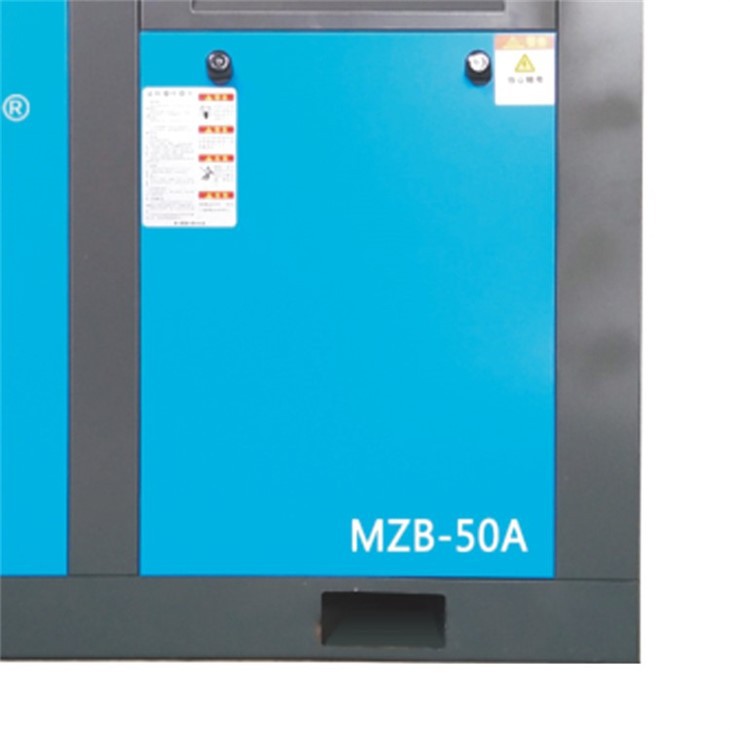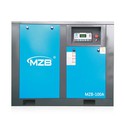As a supplier of Three Phase Screw Air Compressors, I understand the critical importance of proper transportation and handling for these complex and valuable machines. In this blog post, I will delve into the specific requirements for transporting and handling a three - phase screw air compressor to ensure its safe arrival and optimal performance at the destination.
Understanding the Three - Phase Screw Air Compressor
Before discussing transportation and handling, it's essential to understand what a Three Phase Screw Air Compressor is. These compressors are widely used in industrial settings due to their efficiency, reliability, and ability to deliver a continuous supply of compressed air. They operate on a three - phase electrical power system, which provides a more stable and efficient power source compared to single - phase systems. The screw mechanism within the compressor consists of two interlocking rotors that compress the air as it passes through, resulting in a smooth and consistent flow of compressed air.
Transportation Requirements
Packaging
Proper packaging is the first line of defense during transportation. The compressor should be enclosed in a sturdy wooden crate or a heavy - duty metal container. The packaging material should be able to absorb shocks and vibrations that occur during transit. Inside the crate, the compressor should be secured using straps or brackets to prevent it from shifting. Additionally, sensitive components such as control panels and gauges should be protected with foam padding to avoid damage from impacts.
Weight and Dimensions
Knowing the weight and dimensions of the compressor is crucial for transportation planning. Three - phase screw air compressors can be quite heavy and large, especially those designed for Industrial Use Screw Air Compressor applications. The weight determines the type of transportation vehicle required, whether it's a truck, a train, or a ship. For example, larger and heavier compressors may need to be transported by flatbed trucks or specialized heavy - haul carriers. The dimensions also play a role in ensuring that the compressor can fit through doorways, loading docks, and transportation routes without any issues.
Loading and Unloading
Loading and unloading the compressor should be done with extreme care. Specialized equipment such as forklifts or cranes should be used to lift the compressor. The lifting points on the compressor should be clearly marked, and the lifting equipment should be attached securely to these points. During loading, the compressor should be placed on the transportation vehicle in a stable position. It's important to ensure that the vehicle is evenly loaded to prevent imbalance during transit. When unloading, the same level of caution should be exercised to avoid dropping or damaging the compressor.
Transportation Mode
The choice of transportation mode depends on various factors such as distance, cost, and urgency. For short - distance transportation within a local area, trucks are often the most convenient option. They offer flexibility in terms of delivery time and can reach the destination directly. For longer distances, especially across countries or continents, shipping by sea or air may be considered. Sea freight is more cost - effective for large and heavy compressors, but it has a longer transit time. Air freight, on the other hand, is much faster but more expensive.
Handling Requirements
Storage
If the compressor needs to be stored before installation, it should be stored in a dry and clean environment. Moisture can cause corrosion to the metal components of the compressor, which can affect its performance and lifespan. The storage area should be well - ventilated to prevent the build - up of fumes or gases. The compressor should be placed on a flat and stable surface to avoid any structural damage.
Installation
Proper installation is essential for the optimal performance of the three - phase screw air compressor. It should be installed by trained technicians who are familiar with the specific model and its requirements. The installation site should have a stable foundation that can support the weight of the compressor. The electrical connections should be made according to the local electrical codes and the manufacturer's instructions. The air intake and exhaust systems should be properly installed to ensure efficient air flow.
Maintenance
Regular maintenance is required to keep the compressor in good working condition. This includes checking the oil levels, cleaning or replacing air filters, and inspecting the belts and hoses. Maintenance schedules should be followed strictly to prevent breakdowns and extend the lifespan of the compressor.
Safety Considerations
Safety is of utmost importance during transportation and handling. Workers involved in these processes should be trained in proper safety procedures. They should wear appropriate personal protective equipment such as hard hats, safety glasses, and gloves. When using lifting equipment, the operators should be certified and experienced. Additionally, the transportation vehicle should be equipped with safety features such as anti - lock brakes and stability control systems to ensure a safe journey.


Conclusion
Transporting and handling a three - phase screw air compressor requires careful planning and attention to detail. By following the proper packaging, loading, unloading, storage, installation, and maintenance procedures, we can ensure that the compressor arrives at its destination in good condition and performs optimally. As a supplier of Rotary Screw Air Compressor, I am committed to providing high - quality products and ensuring that they are transported and handled with the utmost care.
If you are interested in purchasing a three - phase screw air compressor or have any questions about transportation and handling, please feel free to contact us for a detailed discussion. We are here to assist you in making the right choice for your industrial needs.
References
- Compressed Air and Gas Institute (CAGI). "Standards for Screw Air Compressors."
- Manufacturer's Manuals for Three - Phase Screw Air Compressors.






